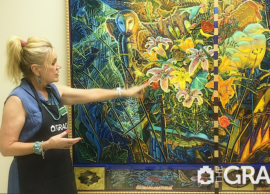Recent Articles
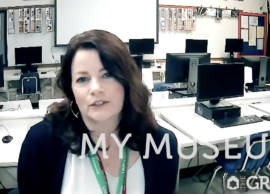
My Museum Monday: AISD Art Teachers
The Grace Museum provides many opportunities for training and community building for Art Educators in AISD, Region 14, and beyond. Hear from AISD art teachers Sherry Smith Griffith and Melody Kennedy about how The Grace serves their students and peers.
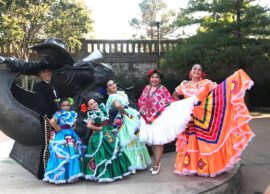
Flash Mob Folklorico
We are wrapping up our week of el Dia de Muertos with Flash Mob Folklorico! Enjoy this beautiful performance of El Huapango de Moncayo as performed by St. Vincent Pallotti Ballet Folklorico (St Vincent Pallotti Catholic Church) in the heart of Downtown Abilene.
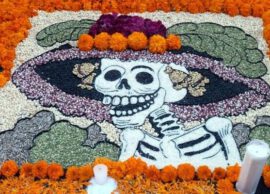
Tradition of Tapetes
One of the more elaborate and beautiful Dia de Muertos traditions is the creation of tapetes or “rugs/tapestries” comprised of flower petals, sand, rice, beans, sawdust, etc. The Center for Latin American Studies at Vanderbilt University writes: Spanish for “rug,” Dia de los Muertos tapetes are large, colorful piece of art made on the ground as part of the Dia de los Muertos celebration in parts of Mexico.
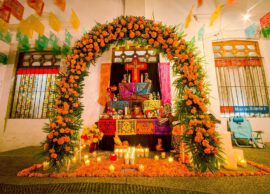
Dia de los Muertos: Symbols and Traditions
The Dia de los Muertos holiday is filled with beautiful symbols, traditions, and imagery. Every detail represents something significant and special in the remembrance of loved ones. Some traditions are rooted in ancient meso-American traditions, some came from Spanish/European cultural traditions, and some have evolved over the 3,000+ years of celebrations. From Monarch Butterflies to native Copalli incense to Cempasúchitl – learn about many of the imagery, symbols, and traditions…
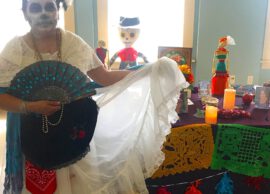
Tradition of the Ofrenda
One of the central components of the Dia de los Muertos holiday celebration is the altar or ofrenda (offering). You may have seen many around town yesterday or perhaps contributed to The Grace Museum community ofrenda at a previous family festival. An ofrenda is typically an altar or special table in the home where a collection of significant objects are placed to celebrate the lives of loved ones who have passed. Today, Aida Pantoja shares about her Veracruz heritage and how she celebrates el Dia de Muertos and sets up her ofrenda for her father each year. Tomorrow we will explore the significance and symbolism of the many components of the ofrenda.
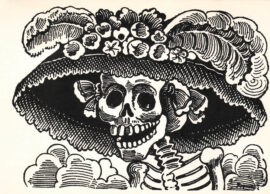
La Catrina – A History
La Catrina or La Calavera Catrina is one of the most recognizable symbols of the Dia de los Muertos holiday – but do you know her origins? The story of La Catrina involves three of Mexico’s most famous artists across two generations and the power of art as a reflection of society.
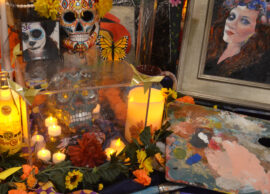
Feliz Dia de Muertos
Feliz Día de los Muertos! Since we cannot all be together this year for The Grace Museum annual Día de los Muertos Family Festival, we will be celebrating all week long with daily history, traditions, and art. Today we begin with the origins of the holiday – a beautiful blending of ancient Nahua pre-Columbian Mesoamerican traditions and European Catholic influences that inform today’s celebration of life across Mexico and beyond.
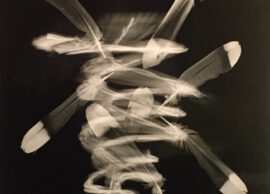
Film Friday: Robert Langham III
It’s #FilmFriday and we are talking about MOVEMENT! Take a look at the beautiful and magical photographs of Robert Langham III whose work was not only featured in his solo exhibition at the Grace, Magic & Logic, but who is also well represented in the Grace permanent art collection. Langham’s proprietary process shown in several of the included images captures motion in a way like no other.
Film Friday: Graciela Iturbide
Ramon Reverte of Aperture writes, “For more than fifty years, Graciela Iturbide, recognized today as the greatest living photographer in Latin America, has envisioned the diversity of life in her native Mexico. Her lyrical, black-and-white images of street scenes in Mexico City, of Seri women in the Sonoran Desert, of political rallies in Juchitán, and of details inside Frida Kahlo’s bathroom are revered throughout the world.” Learn more about this incredible artist and view her work in the collection of The Grace Museum.
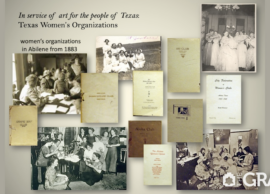
Way Back Wednesday: West Texas Clubwoman
In the late nineteenth and early twentieth century many women did not have access to higher education nor were they permitted to participate publicly in leadership roles. The solution was to band together in a socially accepted format to educate each other and make contributions to their community as a group.
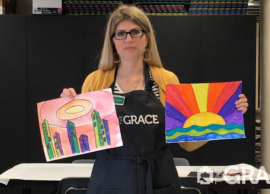
How To: Wax Resist Cityscape + Oceanscape
Get out your watercolors and crayons for this fun double feature art activity! For #ArchitectureWeek you will learn how to create a city using a wax resist technique as well as a bonus oceanscape activity using your same materials.
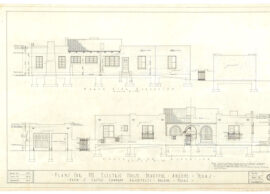
Way Back Wednesday: David S. Castle, Skyline Maker
As one of the most significant and prominent architects in Abilene and the Big Country in the early to mid-1900s, David S. Castle designed and built hundreds of schools, residential buildings, hotels, medical buildings, municipal buildings, churches, recreational buildings, and courthouses. Learn about Castle’s role in the history of architecture in Abilene and the surrounding areas, concentrating on Castle’s contributions to the evolution and growth of Abilene. The buildings he designed are a reflection of the development of Abilene as a trade route and important hub in the oil industry throughout the early twentieth century.
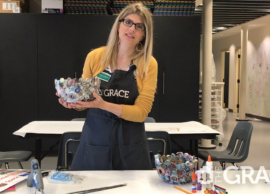
Make A Magazine Strip Bowl
It’s #ArchitectureWeek so we are thinking in 3D! Learn about constructing a form in 3D with this simple (and earth-friendly) project using just old magazines, glue, scissors, and a bowl form.

Way Back Wednesday: Tools for Modern Living
It’s #WayBackWednesday and #STEAMweek here at the Grace and today we are sharing some important tools from the history collection! There was a time when hi-tech was low-tech and the history vault at The Grace is full of reminders that maybe those weren’t necessarily simpler times. Judging from the treasures in the history collection, the residents of Abilene have been on the cutting edge of modern convenience since the 1880s.

Best Friends: The Dog as Subject in Fine Art Photography
Best Friends: the dog as subject in fine art photography presents individual dogs as primary subject. Many of the photographs could be labeled portraits because of the obvious affection the photographer has for the particular dog in the photograph. This exhibition explores the universal symbiotic relationship between people and their dogs as captured on film by photographers William Wegman, Elliott Erwitt, Keith Carter, Rufus Lovett, J.W. Clarke, Dennis C. Darling and many others from the private collection of professional photographers Alice and Bill Wright.
